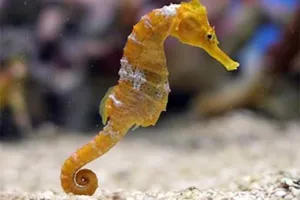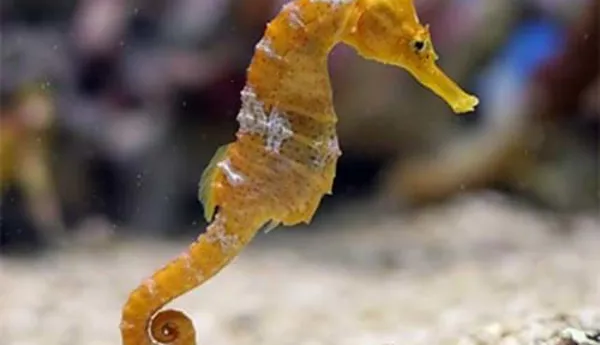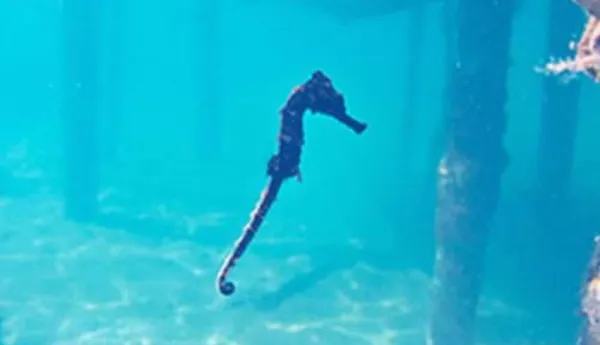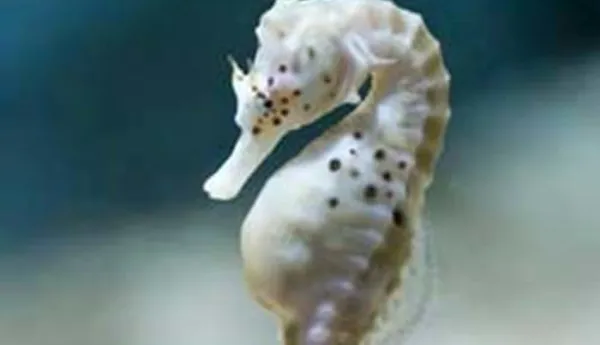
Seahorses belong to the Syngnathidae family.
Their jaws are fused to form a straw-like snout, instead of scales they have thin skin stretched over a series of bony plates and they are slow swimmers.
Perhaps the coolest thing about this group is that the males brood their babies! A male Seahorse has a brooding pouch on its belly into which a female can place her eggs. After a few weeks when the babies are ready, the male Seahorse gives birth. He rocks back and forth like a rocking-horse whilst the tiny baby seahorses pop out from a small hole in his tummy.
You can discover these amazing creatures as you journey into 'The Temple of the Seahorses' during your visit. Scroll down to read more!
You can find seahorses in oceans all over the world! There are over 40 species. Some live on coral reefs, others amongst mangrove roots and many live in seagrass meadows. Pigmy Seahorses are as tiny as your little finger nail, but Big-belly Seahorses will be even bigger than your hand!
Their Ancient Greek name is Hippocampus, which means ‘horse sea monster’. But we don't think our seahorses are monsters at all!
Unfortunately, seahorses are at risk of extinction due to the pollution and destruction of their habitat. 150 million seahorses are also captured and killed every year to use in traditional medicine.
SEA LIFE campaigns to help protect vital seahorse habitats.

Swimming
To swim, seahorses beat their dorsal fin 30 to 70 times a second!

Just like monkeys
Seahorse tails are prehensile. That means they can use them to grip things like a monkey's tail! Seahorses hang onto seagrass or coral so they don't get swept away in the current.

Eyes everwhere
Seahorse's eyes can move independently to help them spot food!